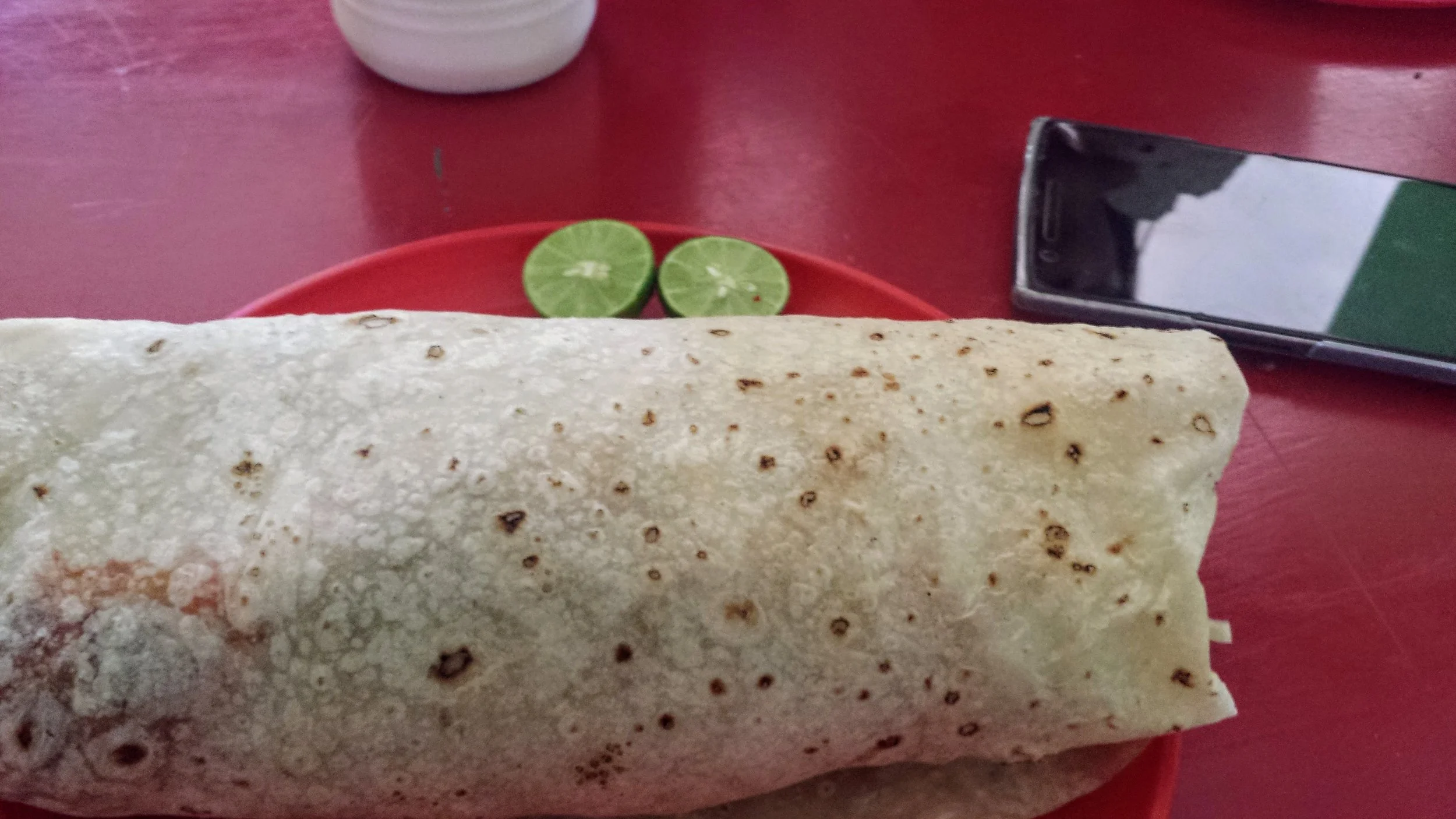The First Documented Burrito in Tucson, Arizona
*Cell phone added for scale. Look for more of these delicacies with paper-thin tortillas on the Hermosillo Culinary Tour.
One of the earliest written descriptions of Tucson's local food scene comes from the diary of George O. Hand, a Sargent in the Union Army’s First Infantry Regiment, California Volunteers.
"The town is full of huckster stands - fruit, pies, cakes, and many other things for sale- watermelons, pomegranates (grenadas) 8c peaches (none worth eating), 10 for a bit...The pies are made of jerked beef & red pepper."
- Sergeant George O. Hand, California Column, Tucson, 1862
Frida Kahlo’s last painting at her home in Coyoacan visited on the Mexico City Trip.
Jerked beef refers to the traditional carne seca sonorense. In an era without refrigeration fresh meat was a rare delicacy and carne con chile would have been made of this year-round source of dried beef jerky added to chile sauces or sauteed with vegetables. George refers to the burritos as pies, because tortillas are foreign to his nineteenth-century New York upbringing, sweet and savory pies would have been more familiar to his tastes.
If you ever have the chance to dine at the iconic El Charro restaurant in Tucson, as you approach pay close attention to the triangular steel carne seca drying cage aloft on the roof of the historic Mexican restaurant. The owners and staff of the restaurant are still dedicated to preparing a recipe with over 400 years of legacy in the Sonoran Desert.
It is certainly one of the cornerstone reasons, why the Arizona city is the United States' first World City of Gastronomy as designated by UNESCO. Essentially, Tucson has not lost its ancient food traditions despite the rapidly changing twenty-first-century world we live in. Now that is something to celebrate. What El Charro prepares, carne seca is the same ingredient that filled the “jerked beef & red pepper pies” described by George O. Hand!
The first documented burrito just scratches the surface of the rich food history of Tucson and the Sonoran Desert, but you can learn more about the culinary heritage of the borderlands on one of our upcoming intercultural trips. We will raise a toast of bacanora in honor of George for providing us with a window into the world of the past of the region through his writings!
Source:
Carmony, Neil B. “THE CALIFORNIA COLUMN OCCUPIES TUCSON: George O. Hand’s Diary, August 8-December 2, 1862.” The Journal of Arizona History 26, no. 1 (1985): 11–40, http://www.jstor.org/stable/41859613.
~~~~~~~~~~~~~~~~~~~~
Like this article and learning about the cultural heritage of the borderlands?
Sign up for our free digital magazine for more and receive our 5 Things You Need to Know Before Visiting Mexico Checklist.





